Helping the Moult
 A good moult is generally seen as being necessary for a successful racing season next year. A smooth moult and perfect new feathers are signs of good health and good management during the moult. The moult heavily taxes the birds the birds organism. In a very short period of time the bird has to renew all of its feathers. The pigeon gets all the raw materials for renewal of its feathering from the food it eats.
A good moult is generally seen as being necessary for a successful racing season next year. A smooth moult and perfect new feathers are signs of good health and good management during the moult. The moult heavily taxes the birds the birds organism. In a very short period of time the bird has to renew all of its feathers. The pigeon gets all the raw materials for renewal of its feathering from the food it eats.
An Indicator
The manner in which the pigeon moults will tell us something about the birds make-up. This information can be used to evaluate the pigeons chances of doing well in the upcoming racing season. For example, pigeons who’s performance the past season did not compare with that of previous seasons, or pigeons that were lost and returned in a run down condition. If these birds have a slow moult and/or the quality of the new feathers is not up to expectation, than this could be used as an indicator of what to expect of the birds performance next year. Then this could be used as a reason to replace these birds on the race team. On the other hand if these birds have a quick easy moult and the feathers are of perfect quality, then this is an indicator that the birds organism has recuperated and next years performances should be good. This should increase the birds chance to stay on next years race team.
Every pigeon that does not go through a good moult gets a big minus besides its name. Only if it has been an outstanding pigeon or if there is a good reason for a poor moult and that the reason for it has been bridged does the pigeon get a chance to stay after the selection.
Fret Marks
As I have mentioned above the perfect growth of new feathers depends on health, plenty of rest and a good feed. Through a period of sickness or a shortage of the necessary raw materials while the feathers are renewing, the feathers can show flaws.
The most common flaws are fret marks. During the race season they can be a sign of a hard flight. A pigeon during a hard race can use up all its energy reserves, this can cause a shortage of ingredients necessary for the renewal of the feather. If at the moment the feather is growing and the birds system is taxed heavily this can show up as a line across the new feather. In this instance such a feather is called a “work flight” or a battle scar.
For future performances such a flight has little meaning. Only when the shaft is also weakened and this work flight breaks does it have any consequences on the upcoming races. This consequence is small if it is one of the flights on the inside of the wing. True, there is a small gap in the back wing till the flight moults the following season, but, this is only a disadvantage on a long distance race. If it is one of the flights on the outer wing then there is a definite handicap especially, if the flight on either side has been dropped. It is possible to pull such a flight but don’t do it till the moult has been completed.
Apart from the flights the rest of the feathers can also show signs of hardships. I once had a pigeon that returned home after a long time. Its new feathers were of such a poor quality that I did not recognize the bird at first. Its new feathers were frayed and the colour was faded. Apparently the pigeon was not able to find a balanced diet.
Rest
Pigeons who in September are still racing or raising youngsters will complete the moult later than those that have been relieved of these duties. This tells as the plenty of rest helps the moult go smoothly. For this reason pigeons that are to be mated around the first of December are separated in September. Because, they are no longer chasing hens, laying eggs or feeding youngsters the moult takes place smoothly and quickly. Rust also affects the quality of the feathers positively.
Health
It is very important for the moult that the pigeons are healthy. If you are not sure of the health of your birds than consult a veterinarian. There are drugs that will affect the growth of new feathers in a negative way. If during the moult your pigeons have to be treated, than ask a veterinarian if the drugs used will harm the moult. Sometimes, for this reason it is necessary to wait till the moult is finished to treat the birds. Especially some of the worming preparations can have a bad effect on the moult. Always carefully read the information that comes with the medicine.
Varied Feeding
During the moult we feed by preference a moulting mix. This is understood to be a varied mix with a somewhat higher content of legumes ( thirty percent). Legumes contain a large amount of protein. Proteins are the most important raw material for the forming of new feathers. Oil rich seeds are also useful during the moult. Most of the moulting mixtures are of a good variety and quality.
The variety in a moulting mix is important because it decreases the chance that one of the necessary ingredients for renewing the feathers is missing in the diet. Any deficiency will affect the quality of the new feathers. You can compare the renewing of the feathers with building a wall. To build a wall you need bricks, cement, sand and water. No matter how many bricks or how much sand and water you have if you run out of cement you can no longer build the wall.
Even if we feed a good moulting mix, it wont hurt to increase the variety of the mix some more. We can add a mix of small seeds to the basic mix to increase the variety. There are commercial small seed or what are sometimes called candy mixes available, but, I mix one of these myself. I buy a variety of seeds, usually one kilo of each of the following, canary seed, rape seed, peeled oats, paddy rice, sunflower seeds, millet, buckwheat, hemp and mung beans. To this I add as much flax as all the other seeds weigh in total. Flax has been historically has been know as a seed that contains many ingredients necessary for the moult. It contains among other things the amino acids that are usually missing in a grain mix. This mix is added to my regular mix at the rate of 1 ½ liter to 25 kg.
Minerals are also important for the growth of new feathers. This we can tell by need for the mineral powder during the moult. Pigeons eat it readily when they are feeding youngsters and during the moult. After the moult is done then they ignore the minerals till it is time to feed youngsters again. Greens and pickstone are also necessary at this time.
Baths
When the birds are moulting they love to bathe more than at any other time of the year. It seems that the new feathers supply more scales and flakes and these probably make the birds feel itchy. Moulting pigeons usually pick and preen their feathers more than birds that are not moulting. We notice this also when the birds come home from a race at this time. They tend to sit on the roof longer and pick at their feathers before they are ready to come in. Moulting pigeons should have a bath at least once per week. They will show their thanks by making full use of it.
In Conclusion
The moult is a annual naturally occurring process with which healthy, well fed pigeons have no problems. Fanciers who look at the moult as a type of sickness way of the mark. It is true that the moult seems to lower the birds natural resistance to disease somewhat. There are sicknesses that occur more often during the moult.
Providing all sorts of supplements, regardless of what all the advertisers would suggest, is not necessary. Pigeons are grain eaters. As the product of millions of years of evolution they are suited to find all the necessary ingredients needed to re-grow a perfect new feather covering in their natural food. Vitamins, tea’s and all the other products have not been shown to be necessary, they only make the fancier feel that he has not neglected to provide all that the birds need. If this makes you sleep better than go ahead. Anyone who is using all these byproducts and is looking for a way to lower the cost of his hobby can stop and see the results for himself. Give the products to one half of the birds and none to the other half. After the moult look to see if a difference in the feather quality can be observed. If you don’t trust your own judgment get someone else to give you his opinion. Ask him if he can see a difference.
Every year I’m surprised when the time comes when all the feathers seem to drop at the same time. It is understandable that someone thinks boy oh boy that product I gave the birds sure is making them moult. Without that product they would moult just as fast.
Helping the Moult by Jos de Zeeuw
The Leading Online Pigeon Racing and Racing Pigeons Magazine – The Pigeon Insider


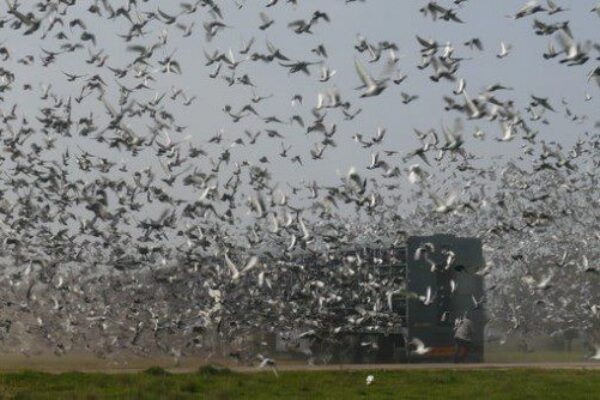
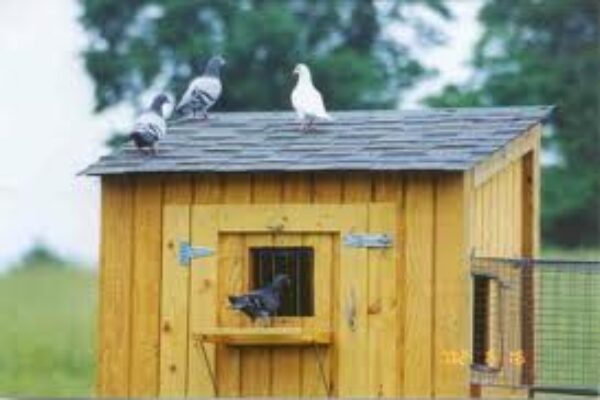
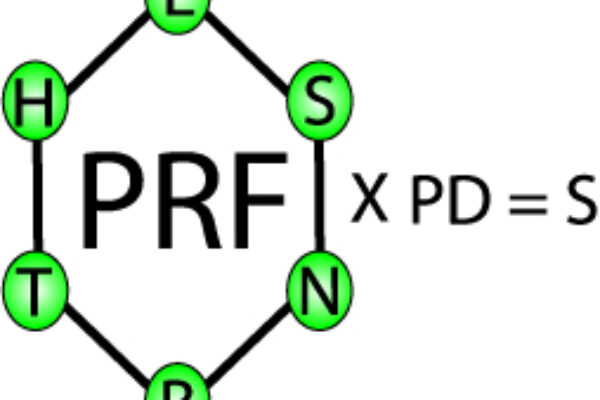
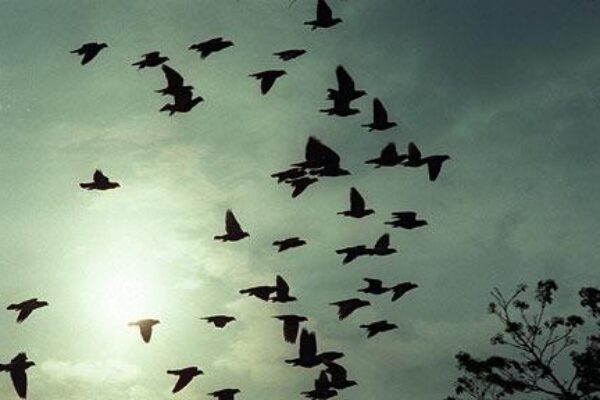
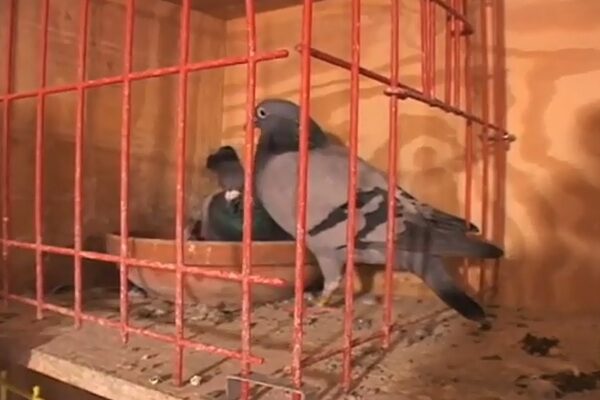


I don’t know much about moulting but my pigeons moults is always on time, I think. Chris this what I’ve read in this artical is of great help to me, Thank you very much.
Whitney…You mean well..BUT..MAN created the racing pigeon by generations of selection by “Mr. Basket.
if a pigeon is in good health about how long will the molt last and as said before in good health and good feed
love your articles on varios subjects i race pigeons in the western cape where the climate is cold wet my coment about the moult or a good moult and rearing young birds i normally add chicken brioler pellets to the breeding mixture on the ratio of 5 parts breeders 1part broiler pellets it rear healthy baies
good article.
Please Whitney it is a pigeon forum, keep your religious belief’s to yourself.
Please, Ken, keep your atheism to yourself. Ken has it right, your modernism is the problem.
We have all seen birds in poor condition who have “ratty” feathers,& are just “run down”! This is “why”, wether it’s a “bug” of some kind, or they have a real bug! pigeon flies-mites-worms. The wrong feed etc.Thanks for the info!
A lot of good info here, but I was disgusted at the author’s reference to birds being “millions of years old” and “evolving”. This is hogwash. I cannot believe that any pigeon fancier would be able to believe in Darwin and evolution. The racing pigeon is an incredible testament that declares that there is a Creator. We humans have not even figured out how our pigeons are able to home over great distances! There is absolutely no way that a creature of such intelligence and perfect structure is a product of chance. Pigeons were designed by an all-knowing God. Think about this; accoring to Darwin, birds evolved from reptiles. How on earth can something as sleek and graceful as a homing pigeon be a descendant of a stupid lizard?? Sure, reptiles have scales and so do pigeons on their legs. This does not show a common ancestor, but rather a common Designer! By the way, I am a believer of microevolution(change and variety within species). The many varieties of pigeons demonstrate this truth. Macroevolution (the gradual change of one specie into another) is utter nonsense. When I have a bird come home from a 500 mile race, I think to myself, “wow the Lord really knew what he was doing when he created pigeons about 6,000 years ago.” Thanks for reading this post. Feel free to contact me if you have questions about Creation. I am not an expert, but will find answers for you. God bless.
New to pigeons and have a dumb question, how do you recognize the molt? Love the articles and I also save them for future ref.
Gene Rose
I mix minerals with the corn using oil to help it stick.
Very good article. I save all the article links in a special email folder so when ever i need a refresher on a given topic i can go down the list and with a click get the info I’m needing. Great work and thanks.